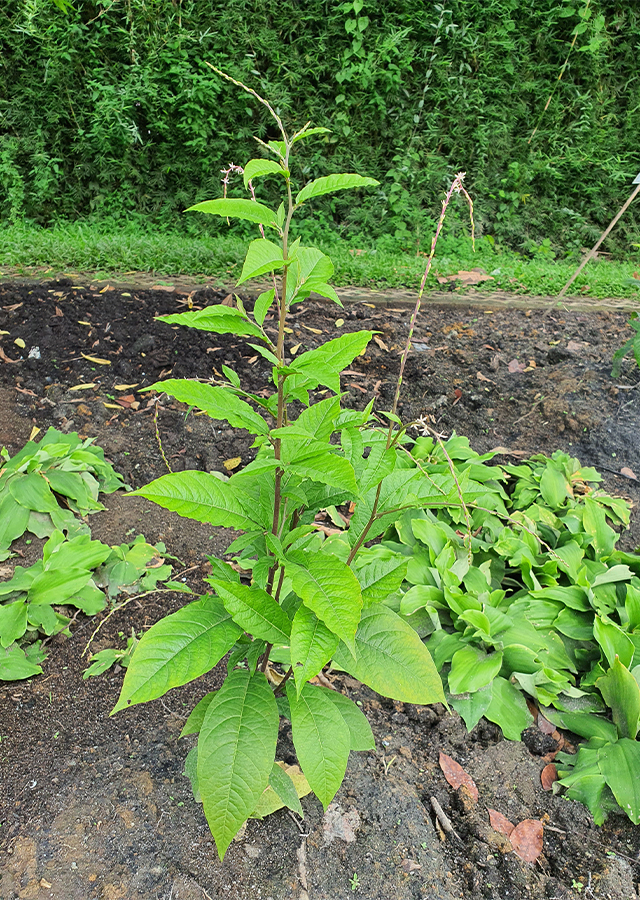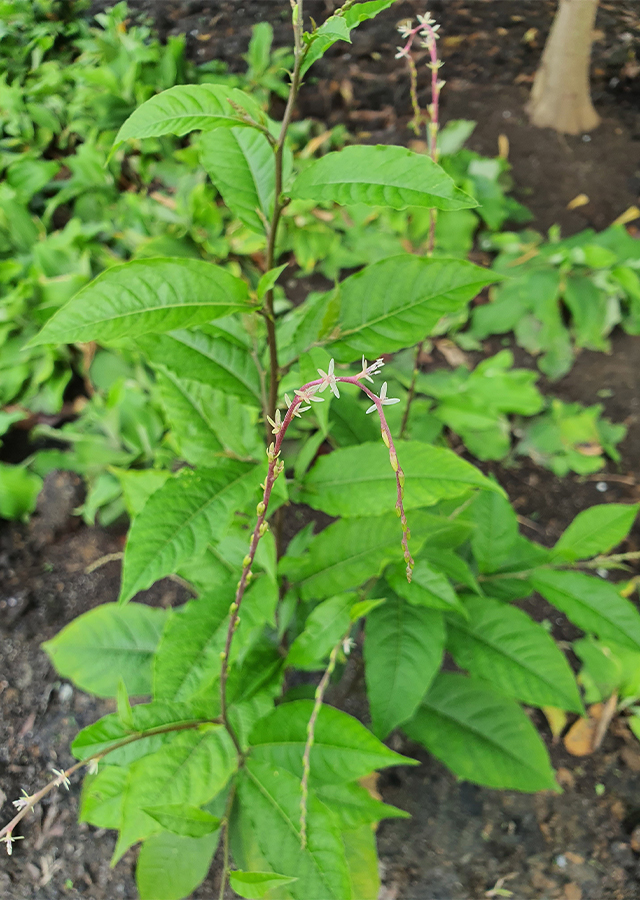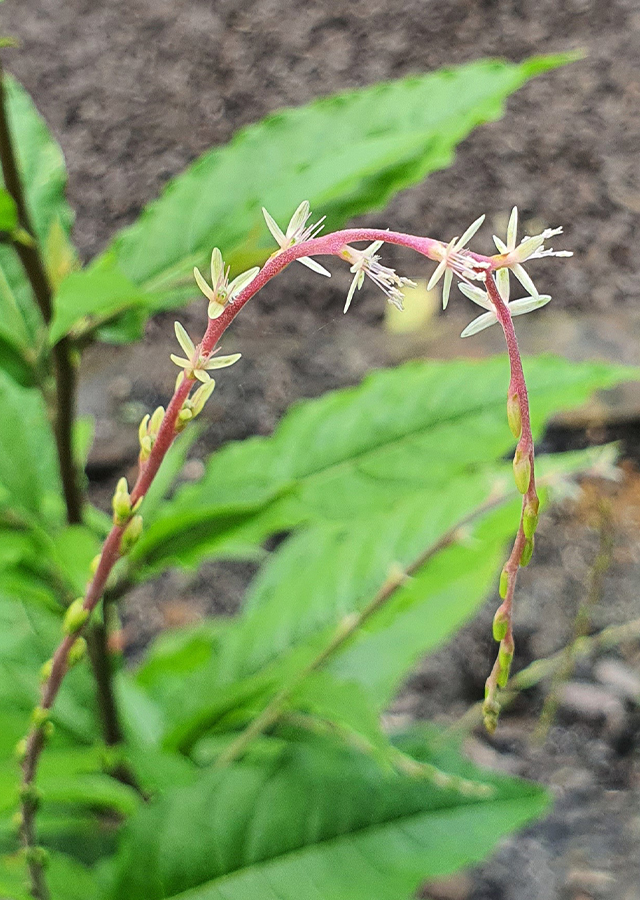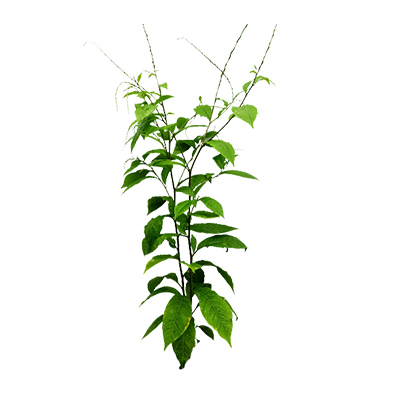Guinea hen weed
Petiveria alliacea L.
Petiveriaceae
Location in our garden
Principal



Synonym
Mapa graveolens Vell.
Petiveria alliacea var. grandifolia Moq.
Petiveria corrientina Rojas
Habitus
Shrubs. A perennial subshrub with a deep, thick taproot and tough stems growing 60-150 cm tall
Part Used
Leaves
Roots
The Whole Plant
Growing Requirements
High Rainfall
Habitat
Forest
Overview
Guinea hen weed is native to North America (Florida and Texas), Mexico, Central America, the West Indies, and South America. It has been introduced in India and tropical Africa (Benin, Burundi, Nigeria, and the Democratic Republic of Congo, and is grown as a medicinal herb.
Vernacular Names
Ajillo (Spanish), Chasse vermine (French), Calauchín (Argentina), Erva guiné (Brazil), Carricillo silvestre (Mexican), Chanvico (Peru), Avette (Haiti).
Agroecology
P. alliacea grows in warm and moist to dry climates at elevations from sea level to 1,300 m. It is adapted to a wide variety of substrates but prefers to grow in well-drained and fertile soils. This species can also be found growing as a weed in plantations, farming areas, and pastureland. Prefers rich, moist soil and a position in partial shade.
Morphology
- Roots - thick taproot.
- Leaves - alternate, simple and entire, stipules 2 mm, petiole 0.4-2 cm, blade elliptic to oblong or obovate, to 20 × 7 cm, base acute to cuneate, apex acuminate or acute to obtuse or rounded. Leaves and stems with garlic smell.
- Inflorescences - often drooping distally, 0.8-4 cm, peduncle 1-4 cm, pedicel 0.5-2 mm.
- Flowers - bisexual, zygomorphic, slightly imbricate to rather remote; sepals white or greenish to pinkish, linear-lanceolate to linear-oblong, 3.5-6 mm, ovary superior.
- Fruits - narrowly oblong achenes subtended by persistent bracts and perianth, 6-8 mm long, striate with recurved hooks, 1 seed.
Cultivation
Propagated by seeds and cuttings of half-ripe wood.
Chemical Constituents
Benzaldehyde, dibenzyl-disulfide, dibenzyl-trisulfide, stilben,thiosulfinates, trisulfides, benzylsulfinic acid.
Traditional Medicinal Uses
Medicinal Uses
- The extracts of the whole plant have been shown to slow the growth of leukemia cells (protective effect on blood cells infected) and stimulate the immune system.
- Root extracts have shown significant anti-inflammatory effects, as well as a significant pain-relieving effect. In addition, many clinical reports and studies confirm that the extracts of the aerial parts and roots have significant broad-spectrum antimicrobial properties in vitro and in vivo against numerous strains of bacteria, viruses, protozoa, fungi, and yeast.
Traditional Uses
- The roots are used as a remedy for toothache, and it has also been used to procure an abortion.
- A leaf maceration is applied to the belly to induce contractions in a difficult delivery.
- A decoction of the whole plant is taken to treat diabetes, cancer, abortion, edema, and blood purifier.
- An infusion of pounded bark is drunk to treat colic, rheumatism, cancer, syphilis, colds, fever, bronchitis, and asthma.
Part Used
Reference Sources
- CABI. (No date). Invasive Species Compendium. Petiveria alliacea (guinea hen weed). https://www.cabi.org/isc/datasheet/70236 22-02-2021.
- Fern, Ken. (2014). Useful Tropical Plants. Petiveria alliacea. http://tropical.theferns.info/viewtropical.php?id=Petiveria+alliacea 23-02-2021.
- PFAF. (No date). Petiveria alliacea - L. https://pfaf.org/USER/Plant.aspx?LatinName=Petiveria+alliacea 22-02-2021
- Pl@nt Use. (No date). Petiveria alliacea (PROTA). https://uses.plantnet-project.org/en/Petiveria_alliacea_(PROTA) 22-02-2021



